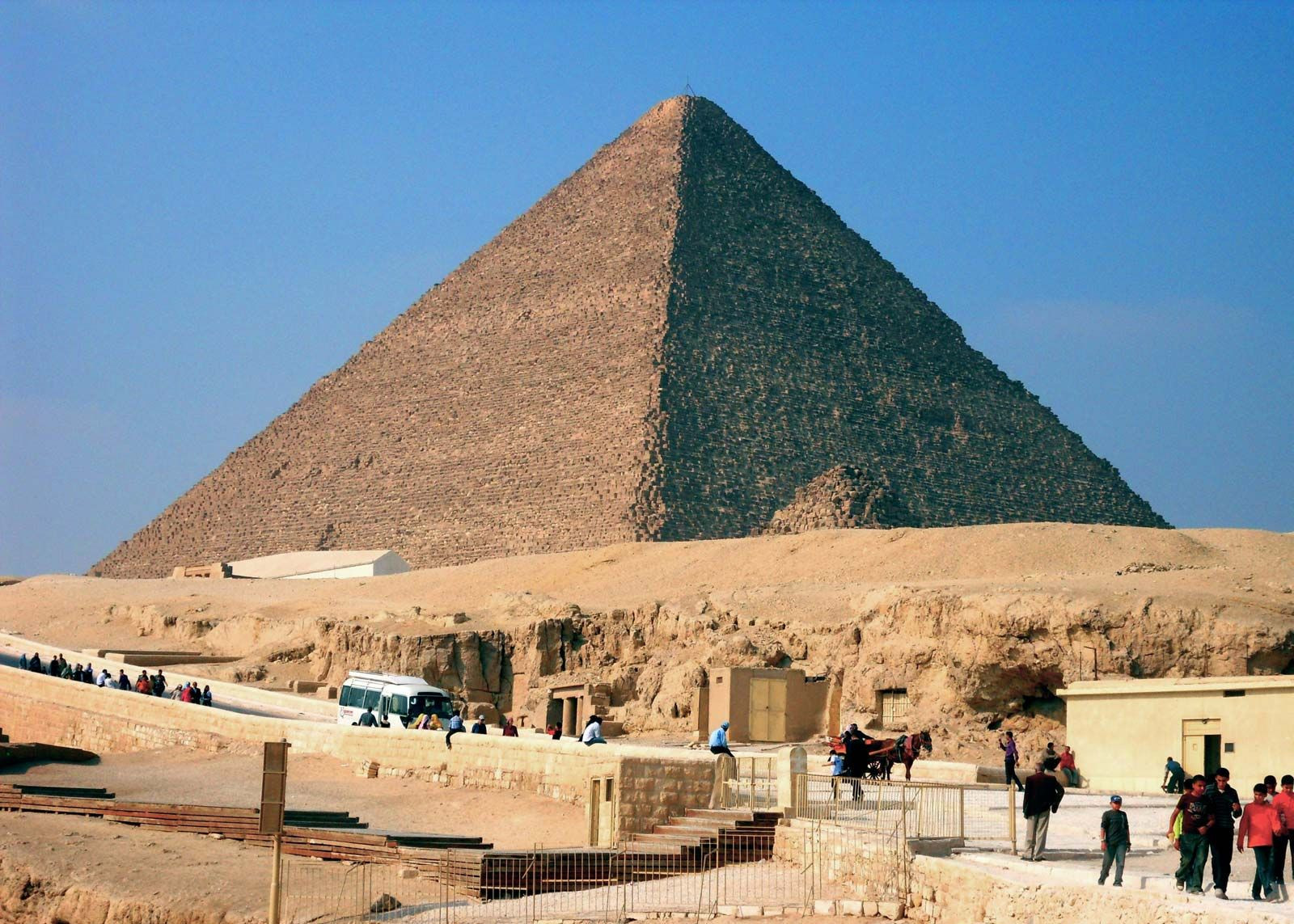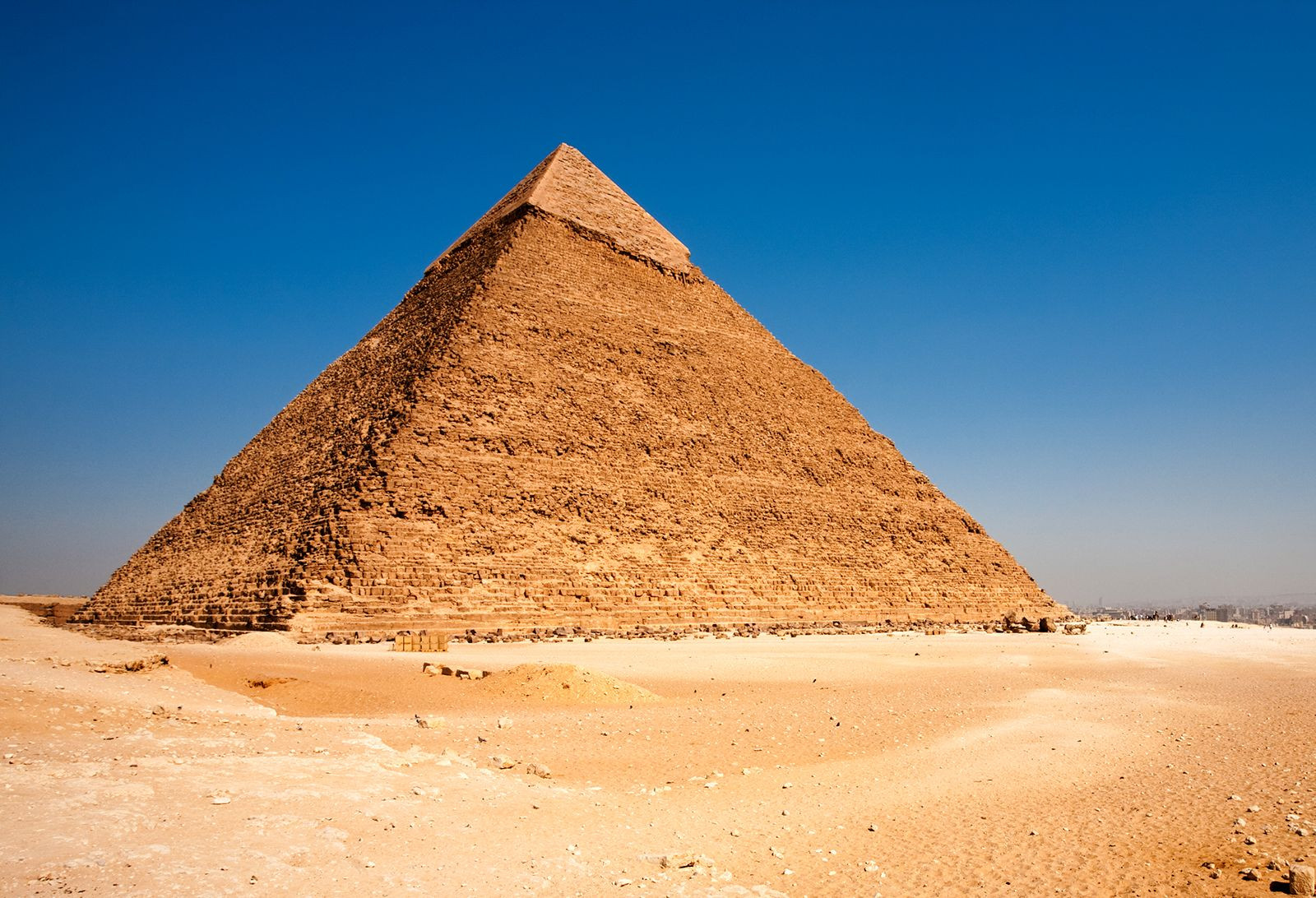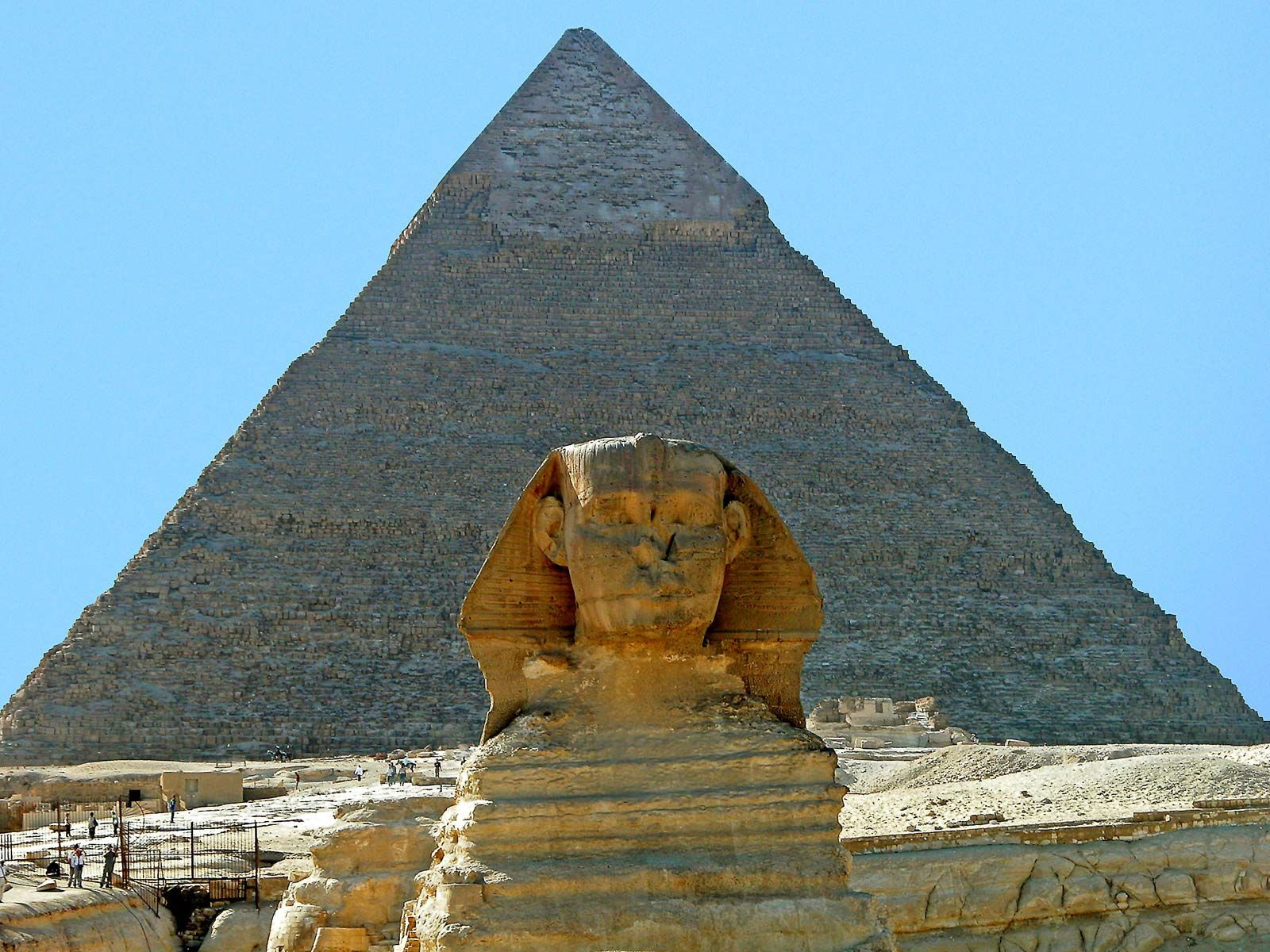The Pyramids of Giza stand as enduring monuments of ancient civilization, captivating the world with their majestic presence and historical significance. These incredible structures, testaments to the ingenuity and power of the ancient Egyptians, have intrigued and drawn visitors for millennia. But for those who have only encountered them in pictures or documentaries, a fundamental question remains: Where Are The Pyramids actually located?
The answer lies in Egypt, near modern-day Cairo. More specifically, the most famous and iconic pyramids are situated on the Giza plateau, on the west bank of the Nile River, close to Al-Jīzah (Giza). This location, steeped in history and bathed in the golden light of the Egyptian sun, is where the wonders of the ancient world rise from the sands.
 Pyramids of Giza in Egypt, a UNESCO World Heritage site
Pyramids of Giza in Egypt, a UNESCO World Heritage site
The Giza Necropolis: A City of the Dead
The pyramids at Giza are not solitary monuments; they are the centerpiece of a larger complex known as the Giza Necropolis. This ancient burial ground, designated a UNESCO World Heritage site in 1979, encompasses not only the three principal pyramids but also a fascinating array of associated structures. These include temples, causeways, smaller pyramids, and mastabas – rectangular flat-roofed tombs – that served as resting places for members of the royal family and high officials. The entire area reflects the elaborate beliefs and funerary practices of the Old Kingdom of Egypt.
The Giza plateau itself is a rocky elevation providing a commanding view of the surrounding landscape. This strategic location on the west bank of the Nile was deliberately chosen. In ancient Egyptian cosmology, the west was associated with the realm of the dead, as it was where the sun set, symbolizing the end of life’s journey. Positioning their grandest tombs on this side of the river was therefore deeply symbolic.
The Three Main Pyramids: Monuments to Pharaohs
The most prominent features of the Giza Necropolis are the three monumental pyramids, erected during the 4th dynasty (circa 2575–c. 2465 BCE). Each pyramid was dedicated to a pharaoh of this era, serving as their tomb and a powerful statement of their divine status.
- The Great Pyramid of Khufu: The northernmost and largest of the three, the Great Pyramid was built for Pharaoh Khufu (Cheops). It was revered in antiquity as one of the Seven Wonders of the World, and it remains the only one still standing. Originally reaching a height of 481.4 feet (147 meters) with base sides averaging 755.75 feet (230 meters), it is a truly colossal structure, composed of approximately 2.3 million stone blocks.
 Pyramid of Khufu, the largest pyramid at Giza, Egypt
Pyramid of Khufu, the largest pyramid at Giza, Egypt
- The Pyramid of Khafre: Located to the southwest of the Great Pyramid, the Pyramid of Khafre (Chephren) is the second largest. Though slightly smaller than Khufu’s pyramid, it appears taller due to being built on higher ground and retaining some of its original smooth limestone casing at the summit. Each side measures 707.75 feet (216 meters), and it originally stood 471 feet (143 meters) high.
 Pyramid of Khafre at Giza, with original limestone casing visible at the top
Pyramid of Khafre at Giza, with original limestone casing visible at the top
- The Pyramid of Menkaure: The southernmost and smallest of the main Giza pyramids belongs to Menkaure (Mykerinus). While smaller in scale, it is still an impressive monument, with sides of 356.5 feet (109 meters) and an original height of 218 feet (66 meters).
Beyond the Pyramids: Exploring the Giza Complex
The Giza plateau offers much more than just the pyramids themselves. Accompanying each pyramid were mortuary temples, serving as places for funerary rituals and worship of the deceased pharaoh. These temples were connected to valley temples, located closer to the Nile floodplain, by long causeways. These causeways facilitated the transportation of materials and the funeral processions.
Perhaps the most iconic structure within the Giza complex, besides the pyramids, is the Great Sphinx. Located near Khafre’s valley temple, this colossal statue, carved from limestone, depicts a mythical creature with the body of a lion and the head of a man, believed to represent the pharaoh himself as a guardian.
 The Great Sphinx and the Pyramid of Khafre at Giza, Egypt
The Great Sphinx and the Pyramid of Khafre at Giza, Egypt
Visiting the Pyramids Today
Today, the Pyramids of Giza are easily accessible from Cairo, making them a major tourist destination. Visitors from around the globe flock to witness these ancient marvels firsthand, to walk in the shadows of pharaohs, and to marvel at the scale and precision of their construction. Exploring the Giza plateau is a journey through time, offering a tangible connection to one of history’s most fascinating civilizations.
While the question “where are the pyramids?” has a straightforward geographical answer, the true answer is richer and more profound. The pyramids are not just located in Giza, Egypt; they are located at the heart of human history, imagination, and wonder. They stand as a testament to the enduring power of human ambition and the mysteries of a civilization that continues to captivate us thousands of years later.
